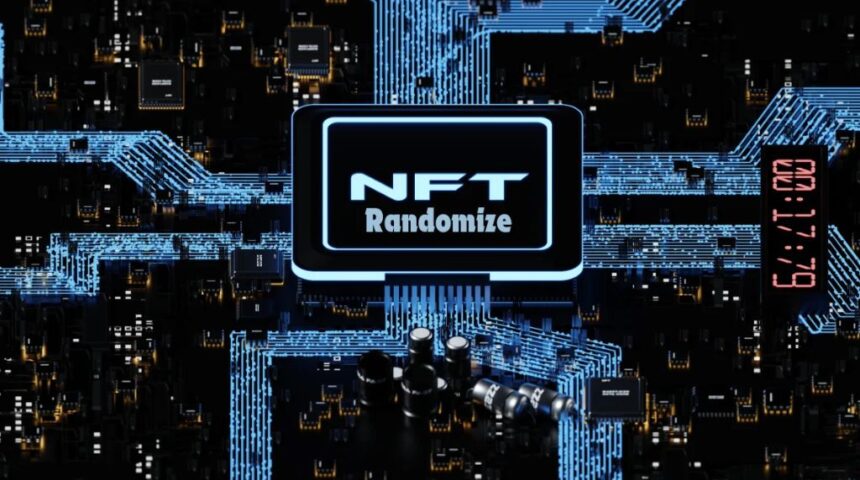Bebasinindo is more than just a cultural term; it represents a profound connection to Indonesia’s heritage, community, and artistic expression. From its ancient origins to its contemporary celebrations, this tradition offers a glimpse into the diverse and vibrant tapestry of Indonesian culture. Join us as we explore the roots, evolution, and ongoing significance of Bebasinindo in today’s world.
Tracing the Origins of Bebasinindo
The origins of Bebasinindo date back to Indonesia’s earliest communities. Rooted in indigenous practices, it emerged as a means of connecting with ancestral spirits and expressing gratitude for the natural world. Initially performed as a sacred ritual, Bebasinindo was steeped in spiritual symbolism, with movements and offerings reflecting reverence for nature and the divine.
As Indonesia became a hub of cultural exchange, Bebasinindo absorbed elements from Hindu, Buddhist, and later European traditions. These influences enriched its rituals and gave rise to the multifaceted expressions seen today. Despite its evolution, Bebasinindo retains its core purpose: fostering harmony between people, nature, and the spiritual realm.
Cultural Significance in Modern Indonesia
Bebasinindo continues to hold a special place in the hearts of Indonesians, transcending time as both a cherished practice and a bridge connecting generations. This traditional art form is not only a cultural expression but also a vital thread in the social fabric of Indonesia, embodying the values, stories, and traditions of the nation.
A Tradition of Unity and Celebration
Bebasinindo often takes center stage during significant life events, such as weddings, harvest festivals, and rites of passage. These gatherings serve as much more than celebratory occasions; they are moments of communal connection, fostering bonds among families, neighbors, and entire communities. During weddings, for instance, the performance of Bebasinindo is often seen as a blessing for the newlyweds, symbolizing harmony, prosperity, and a shared commitment to heritage.
Similarly, harvest celebrations highlight the gratitude of communities toward nature, with Bebasinindo performances expressing reverence and hope for continued abundance. In rites of passage, such as coming-of-age ceremonies, the intricate steps and rhythms of Bebasinindo symbolize the transition from one stage of life to another, embodying growth, responsibility, and wisdom.
Artistry and Regional Diversity
The artistry of Bebasinindo is a testament to Indonesia’s incredible regional diversity. Each performance is a visual and auditory feast, with intricate designs, vibrant costumes, and synchronized movements that tell timeless stories passed down through generations. These elements often depict folklore, historical events, or moral lessons, creating a living archive of local histories and values.
For example, the costumes and accessories vary widely from one region to another, reflecting the unique characteristics of each community. Some ensembles are adorned with gold and intricate beadwork, while others feature bold patterns inspired by nature. The music accompanying Bebasinindo, often played on traditional instruments like gamelan or angklung, adds another layer of cultural depth, creating a harmonious blend of sound and movement that captivates audiences.
Preservation and Evolution
In today’s fast-paced, globalized world, younger generations are rediscovering the beauty of Bebasinindo and finding innovative ways to incorporate it into contemporary life. While staying true to its roots, these modern adaptations ensure the tradition remains vibrant and relevant.
Workshops led by master practitioners provide a hands-on opportunity for young Indonesians to learn the techniques, movements, and stories embedded in Bebasinindo. Festivals dedicated to showcasing regional variations of the art form draw both domestic and international audiences, sparking renewed interest and appreciation. Educational programs in schools also play a crucial role, introducing Bebasinindo to children and instilling a sense of pride and cultural identity from an early age.
Beyond formal settings, Bebasinindo has found a place in the digital era. Social media platforms and online communities allow practitioners and enthusiasts to share performances, tutorials, and stories, reaching a global audience. Some contemporary artists blend Bebasinindo with modern dance or music styles, creating unique performances that bridge tradition and innovation while honoring its essence.
The Evolution of Bebasinindo
From its inception as a sacred ritual, Bebasinindo has undergone significant transformations. Early practices were deeply spiritual, involving chants, dances, and offerings meant to invoke blessings. Over time, these rituals adapted to the changing cultural landscape, incorporating influences from trade, migration, and colonization.
Modern iterations of Bebasinindo often blend traditional elements with contemporary art forms. Festivals and performances now feature a fusion of classic music and dance with innovative storytelling and multimedia elements. This evolution highlights the resilience of Bebasinindo, proving its ability to thrive amidst change while staying true to its roots.
Practicing Bebasinindo: A Step-by-Step Guide
Engaging in Bebasinindo requires mindfulness and respect for its traditions. Here’s how you can partake in this meaningful practice:
- Prepare the Space: Create a calm and serene environment to set the tone for the ritual.
- Gather Offerings: Collect symbolic items such as flowers, fruits, and other meaningful objects that reflect gratitude and respect.
- Set Your Intention: Take a moment to reflect on your purpose and align your thoughts with the practice’s spiritual essence.
- Perform Movements: Engage in deliberate and expressive gestures or dances, each symbolizing specific emotions or stories.
- Incorporate Sound: Chanting or playing traditional instruments adds depth and energy to the ritual.
- Reflect and Conclude: End with a moment of introspection, allowing the experience to resonate before resuming daily activities.
Addressing Misconceptions and Challenges
Despite its cultural richness, Bebasinindo often faces misunderstandings. Some perceive it as merely a ritualistic or superstitious practice, overlooking its deeper role in fostering community and preserving heritage. Others believe it is static, failing to recognize its adaptive nature and ongoing evolution.
Media representations sometimes sensationalize or misinterpret Bebasinindo, leading to debates about authenticity and cultural appropriation. Practitioners emphasize the need for education and respectful engagement to address these issues.

Celebrating Bebasinindo Today
In contemporary Indonesia, Bebasinindo thrives as a celebration of tradition and creativity. Festivals showcasing its vibrant performances attract locals and tourists alike. These events feature elaborate costumes, music, and dances that reflect the unique identity of each region.
Educational initiatives, including workshops and online resources, play a crucial role in introducing Bebasinindo to younger audiences. Social media has also become a powerful platform for sharing its beauty, ensuring its relevance in a digital age.
The Impact of Bebasinindo on Society
Bebasinindo enriches Indonesian society in numerous ways:
- Cultural Preservation: By passing down traditions, it safeguards Indonesia’s heritage.
- Community Building: Shared rituals strengthen relationships and foster unity.
- Economic Benefits: Festivals and workshops attract tourism, boosting local economies.
- Cultural Pride: Celebrating Bebasinindo instills a sense of identity and resilience among Indonesians.
Embracing Bebasinindo’s Legacy
Bebasinindo stands as a testament to Indonesia’s cultural diversity and adaptability. It invites individuals to connect with their roots, embrace shared traditions, and find meaning in community and spirituality. As it evolves, Bebasinindo continues to inspire pride and unity, ensuring its place in the fabric of Indonesian life for generations to come.
By learning about and engaging with Bebasinindo, you not only honor a rich tradition but also contribute to its preservation and celebration in a rapidly changing world.
Facts about Bebasinindo
- Cultural Importance: Bebasinindo is traditionally performed during significant life events such as weddings, harvests, and rites of passage.
- Artistic Expression: It features intricate designs, vibrant costumes, and synchronized movements that convey folklore, historical narratives, and moral lessons.
- Regional Diversity: Each region in Indonesia showcases unique styles of Bebasinindo, reflecting local customs, traditions, and artistry.
- Music Integration: Traditional instruments like gamelan, angklung, and others accompany performances, creating a rich auditory experience.
- Intergenerational Bonding: Bebasinindo serves as a bridge between generations, connecting the young with the wisdom and stories of their ancestors.
- Modern Revival: Younger generations are revitalizing Bebasinindo through workshops, festivals, and contemporary adaptations while maintaining its authenticity.
- Global Presence: Social media and international festivals have brought Bebasinindo to global audiences, raising awareness about Indonesian heritage.
FAQs about Bebasinindo
Q: What is Bebasinindo?
A: Bebasinindo is a traditional Indonesian art form that combines dance, music, and storytelling. It serves as a cultural expression reflecting the country’s rich heritage and regional diversity.
Q: When is Bebasinindo performed?
A: It is performed during significant events such as weddings, harvest celebrations, rites of passage, and cultural festivals.
Q: Why is Bebasinindo important to Indonesian culture?
A: Bebasinindo is a vital part of Indonesia’s identity, preserving local histories, fostering communal bonds, and passing down traditions from generation to generation.
Q: How is Bebasinindo being preserved today?
A: Efforts to preserve Bebasinindo include workshops, educational programs, festivals, and digital platforms that promote and adapt the tradition for contemporary audiences.
Q: Can non-Indonesians learn and perform Bebasinindo?
A: Yes, many workshops and cultural exchanges welcome people from different backgrounds to learn and appreciate Bebasinindo while respecting its cultural significance.
Conclusion
Bebasinindo is a timeless embodiment of Indonesia’s cultural richness and diversity. Rooted in tradition and celebrated across generations, it continues to serve as a unifying force in both rural and urban communities. Its vibrant performances, intricate artistry, and deep cultural narratives reflect the resilience and creativity of the Indonesian people.
In the modern era, efforts to preserve and adapt Bebasinindo ensure that this treasured tradition remains vibrant and relevant. Through workshops, educational programs, and global exposure, it bridges the gap between the past and the present, inspiring future generations to embrace and celebrate their heritage.
Bebasinindo is more than an art form; it is a living testament to the enduring power of culture to shape identity, foster unity, and connect the stories of yesterday with the aspirations of tomorrow.











